

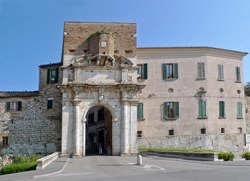
It is possible to walk around the entire circuit of the medieval walls of Amelia, which extends for some 2 km. The walls to the south coincide with those of the Umbrian settlement, which were probably begun in the 5th century BC.
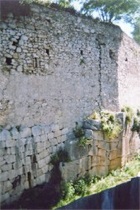
-
✴the large polygonal blocks from the original structure, which are skilfully laid without mortar;
-
✴the regular blocks from a later (probably Roman) restoration; and
-
✴the small stones in the upper part of the wall that were added in the Middle Ages.
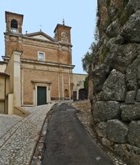
Pope Leo IV reinforced the western stretch of the city walls in ca. 847 , probably to improve the city’s defences against Saracen raids. This stretch includes Porta Leone (see below).
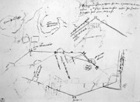
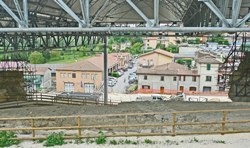
A 30 meter section of the wall some 100 meters from Porta Romana in the anti-clockwise direction collapsed in 2006 and is still in restoration (as at May 2011). There are plans to establish an archeological park above the walls here, following their restoration.
City Gates
The following sections describe the city gates, starting with Porta Romana in the south and proceeding in the anti-clockwise direction.
Porta Romana (1592-1639)
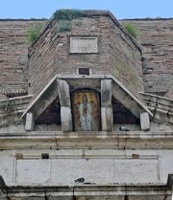
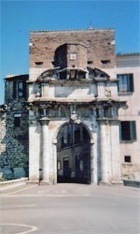
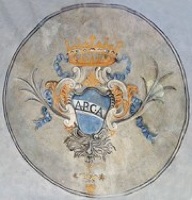
This was the site of the Roman gate that formed the main entrance to the city from Via Amerina. In the Middle Ages, the gate here had a drawbridge over a defensive ditch. The present gate was begun in 1592 and completed by the brick crowning in 1639.
-
✴The plaque above the arch (illustrated above, to the left) commemorates the dedication of the city to Santa Maria Assunta in 1703, after it had survived an earthquake that devastated the surrounding area. The image of the Assumption of the Virgin below it probably dates to this period.
-
✴The arms under the arch (illustrated above, to the right) bear the initials “APCA” (Anziani Populi Civitatis Ameriae, a reference to the medieval magistrates of Amelia).
Porta del Sole
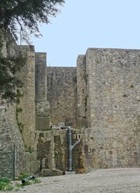
Porta Leone (ca. 847)
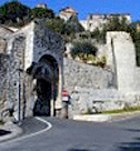
The walls near Porta Leone suffered damage in the Second World War and some rebuilding was carried out in the 1950s. Excavations carried out here in 1998-2000 unearthed ceramics from the 3rd century BC. An inscription on the base of a statue that was uncovered at this time reads:
P(ublio) Licinio Cornelio Salonino Valeriano
nob(ilissimo) Caes(ari) fil(io)
Imp(eratoris) Caes(aris) P(ublii) Licini Egnati Gall[i]eni
pii feli(ci) Aug(usti)
d(ecreto d(ecurionum)
This records that the Decurions (municipal government) had dedicated a statue of Saloninus, the son of the Emperor Galienus. The inscription must date to the period between 258 AD, when Saloninus became Caesar, and 260 AD, the year of his death. This inscription is now in store in Palazzo Comunale.
Porta Posterola (13th century)
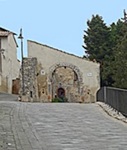
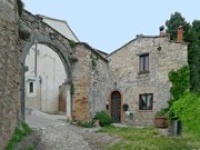
Outer gate Customs house and inner gate
This double gate was for many centuries the main entrance to the city.
-
✴The outer gate was above ground level: it is now approached by an earth ramp but originally had a drawbridge.
-
✴The space between the outer gate and the inner gate, which are at right angles to each other, was used for customs purposes.
The gate was restored in 1340 and again in 1402-5.
Porta della Valle (13th century)
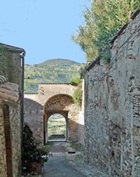
The ancient circuit of walls was some way inside the medieval circuit, and no trace of a corresponding gate has been found in them. It may be that the steep slope here made access too inconvenient to merit one.

